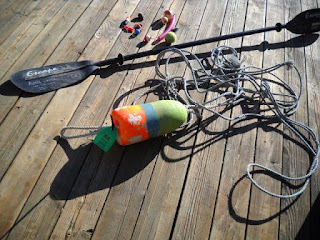Writer Melissa Dalton also penned an accompanying story called "The Legacy of Lily White and The Raysark." Lily White, born in Oregon City in 1866, was an amateur photographer who designed a houseboat and had it built to her specifications. "It would be 80 feet long, contain six rooms furnished in natural wood, and have amenities such as a three-ton ice chest, running water, and an up-to-date darkroom."
The story goes on to say, "The Raysark was part of a larger 'aquatic awakening" happening in Portland at the turn of the century. Portland's first houseboat was completed in 1901, when F.S. Morris shelled out $1,500 to bring the East Coast houseboating trend to the West. Before then, Portland had only seen houseboats in the form of 'scows.' These were essentially shacks upon log rafts, populated by the city's poor who needed the cheapest plot available--the river. The more extravagant houseboats such as White's and Morris' started a trend for the ultimate 'temporary summer abode,' the ideal weekend getaway for the office worker who had to be downtown on Monday morning. Mentions of houseboat parties frequently populated The Oregonian's society pages.
Our houseboats aren't travelling up and down the rivers and I don't believe any of us are making the society pages--is there even such a thing any more?-- but I was enchanted by the idea that as a writer I'm here as part of a continued artistic awakening, another houseboat-dwelling woman inspired by the beauty of the river.



















































